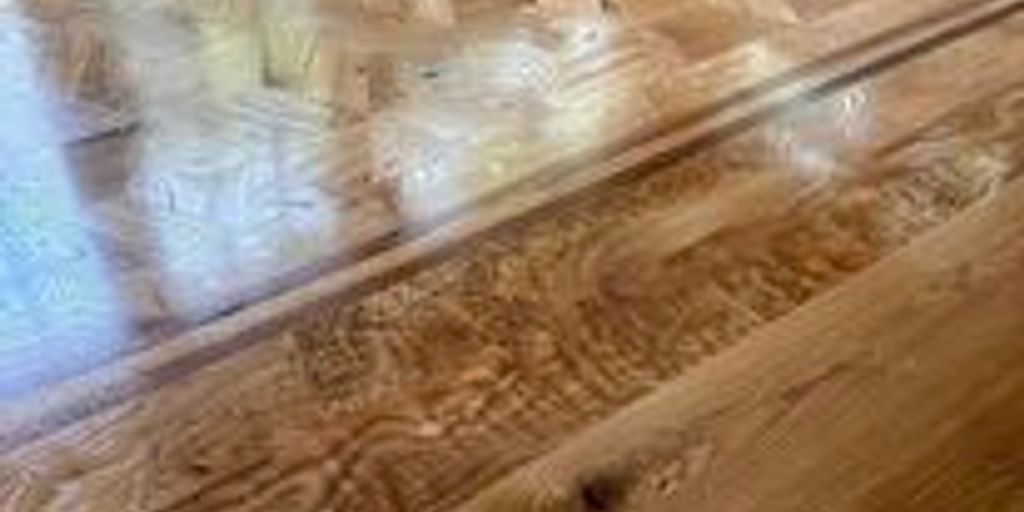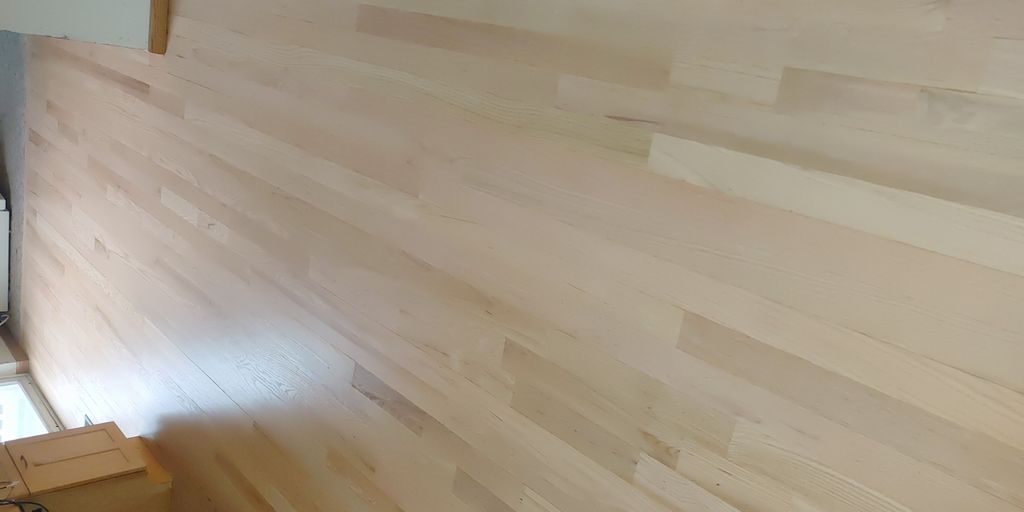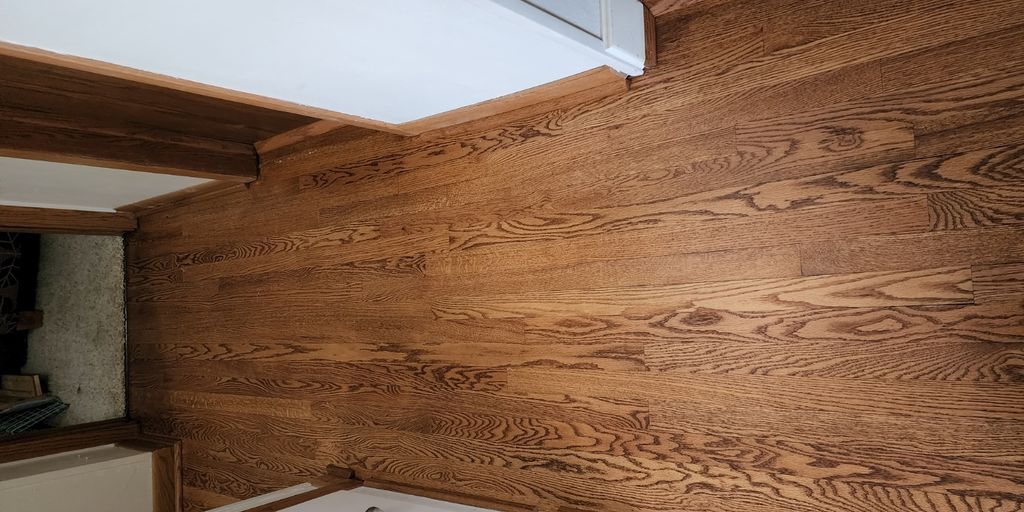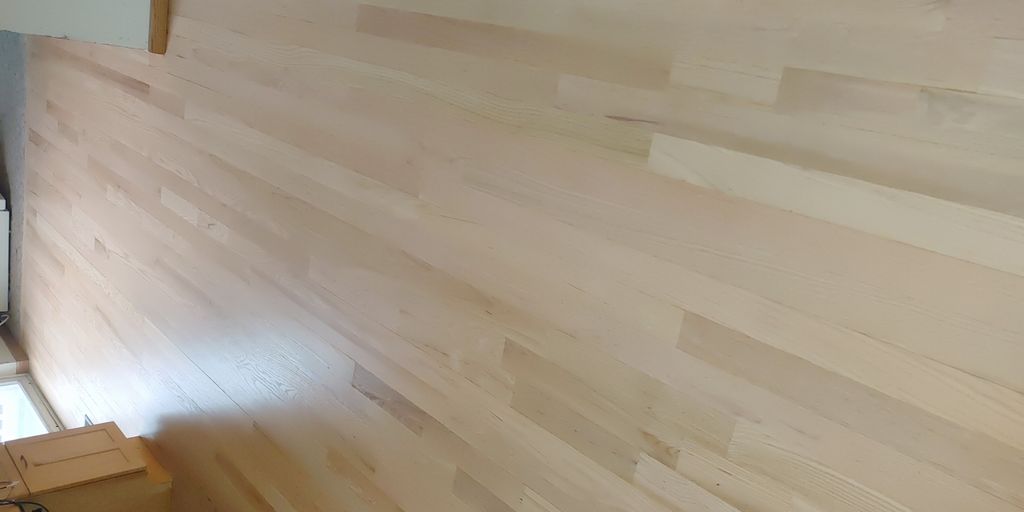Setting up a home gym is an exciting journey, but one of the most important decisions you’ll make is choosing the right flooring. The best flooring for a home gym should be comfortable, durable, and safe for all your workouts. In this guide, we’ll explore ten top flooring options that will help you create the perfect workout space at home.
Thank you for reading this post, don't forget to subscribe!Key Takeaways
- Rubber flooring is durable and provides great shock absorption, making it ideal for weightlifting.
- Foam tiles are an affordable and cushioned option, perfect for light workouts and easy installation.
- Carpet tiles offer comfort and are easy to clean, making them a cozy choice for home gyms.
- PVC vinyl tiles are waterproof and simple to install, great for spaces prone to spills.
- Turf flooring gives a unique look and excellent traction for various workouts.
1. Rubber Flooring

Rubber flooring is a top choice for home gyms due to its durability and shock absorption. It provides a safe surface for workouts, making it ideal for weightlifting and high-impact exercises. Here are some key benefits:
- Durable: Rubber flooring can last over a decade, even in high-traffic areas.
- Shock Absorption: It protects your joints during intense workouts.
- Sound Insulation: Rubber helps reduce noise, keeping your gym quieter.
Pros of Rubber Flooring
- Easy Installation: You can install rubber flooring yourself or with a little help.
- Low Maintenance: Just vacuum or mop to keep it clean.
- Water-Resistant: Perfect for basements or areas prone to moisture.
Cons of Rubber Flooring
- Weight: Rubber flooring can be heavy, especially in rolls.
- Temperature Sensitivity: It may feel cold on chilly floors.
- Odor: New rubber can have a strong smell, but this fades with cleaning.
Rubber flooring is an excellent choice for home gyms because of its durability, sound insulation, and shock absorption. Whether you opt for rolled rubber or tiles, you’ll find it meets your fitness needs effectively.
Installation Options
- Loose Lay: Simply place the flooring down; it stays in place due to its weight.
- Double-Sided Tape: Use tape for added security without permanent installation.
- Glue-Down: Best for high-intensity workouts, but it’s not portable once glued down.
Rubber flooring rolls, tiles, and mats are all excellent options for weightlifting areas, offering the durability and protection needed to support your fitness journey.
2. Foam Tiles
Foam tiles are a fantastic choice for those looking to create a comfortable and colorful home gym. These lightweight tiles are easy to install and provide excellent cushioning for various workouts. They come in a variety of colors and patterns, allowing you to customize your gym space to match your style.
Benefits of Foam Tiles
- Affordability: Foam tiles are among the most budget-friendly flooring options available.
- Cushioning: They offer great support for exercises like yoga, stretching, and bodyweight workouts.
- Easy Maintenance: Cleaning is a breeze; just wipe them down with a damp cloth.
- Safety for Kids: Foam tiles are soft, making them a safe choice for play areas as well.
- Lightweight and Portable: You can easily move them around or take them with you if needed.
Drawbacks of Foam Tiles
- Not for Heavy Weights: Foam can compress under heavy equipment, which may lead to damage over time.
- Susceptible to Punctures: Sharp objects can easily damage foam tiles, so be cautious with equipment.
Foam tiles are a great starting point for a home gym, but consider your workout intensity before choosing them as your primary flooring option.
In summary, foam tiles are a versatile and attractive option for home gyms, especially for lighter workouts and family spaces. They provide a fun and safe environment for fitness enthusiasts of all ages.
3. Carpet Tiles

Carpet tiles are a fantastic choice for home gyms, offering a blend of comfort and practicality. They provide excellent cushioning and sound absorption, making them ideal for areas where you might be doing aerobics or yoga. Here are some key benefits of carpet tiles:
- Comfort: The soft surface is gentle on your joints, making workouts more enjoyable.
- Noise Reduction: Carpet tiles help to muffle sound, which is great for multi-use spaces.
- Easy Installation: Many carpet tiles come with peel-and-stick options, allowing for quick and hassle-free setup.
Pros and Cons of Carpet Tiles
| Pros | Cons |
|---|---|
| Comfortable underfoot | Not ideal for heavy weights |
| Easy to replace individual tiles | Can be less durable than rubber |
| Variety of designs available | May require more maintenance |
Carpet tiles can transform a hard floor into a cozy workout space, making them a popular choice for many homeowners.
In summary, if you’re looking for a flooring option that combines comfort and style, carpet tiles are worth considering for your home gym. They can enhance your workout experience while also being easy to maintain and install.
4. PVC Vinyl Tiles

PVC vinyl tiles are a fantastic choice for your home gym, offering a blend of durability and style. These tiles are water-resistant and easy to clean, making them ideal for any workout environment. They come in various colors and patterns, allowing you to customize your space to fit your personal style.
Key Benefits of PVC Vinyl Tiles:
- Water and moisture resistant: Perfect for high-intensity workouts where sweat is a factor.
- Easy installation: Many tiles feature an interlocking design, making DIY installation a breeze.
- Low maintenance: A simple wipe down with soap and water keeps your gym looking fresh.
Considerations:
- Less shock absorption: While they are durable, they do not provide as much cushioning as rubber or foam options.
- Cost: Prices can vary, but expect to pay around $6.50 per square foot for quality tiles.
PVC vinyl tiles are a great option if you want a stylish and functional workout space. They can help you transform your workout space into a visually appealing area without sacrificing performance.
5. Turf Flooring
Turf flooring is an exciting option for home gyms, offering a unique blend of style and functionality. This flooring type is perfect for various workouts, from running to strength training. Here are some key points to consider:
Pros of Turf Flooring
- Versatile Use: Ideal for running, calisthenics, and CrossFit.
- Joint Protection: Provides a cushioned surface that reduces impact on joints.
- Durability: Can withstand heavy use while maintaining its appearance.
- Aesthetic Appeal: Adds a modern touch to your gym with its vibrant look.
Cons of Turf Flooring
- Subfloor Protection: May require an underlayment for heavy weights.
- Abrasiveness: Not always suitable for floor exercises like burpees.
- Installation Difficulty: More complex than rubber or foam options.
- Cost: Generally pricier than other flooring types.
Installation Options
- Interlocking Tiles: Easy to snap together and transport.
- Double-Sided Tape: Simple method for securing turf in place.
- Glue-Down: Offers a permanent solution but limits mobility.
Turf flooring can transform your workout space, making it both functional and visually appealing. Consider your workout needs and budget when choosing this option!
6. Cork Flooring
Cork flooring is an excellent choice for your home gym, combining sustainability with comfort. Its natural shock-absorbing properties make it a favorite among fitness enthusiasts, as it reduces strain on joints during workouts. Here are some key benefits of cork flooring:
- Eco-Friendly: Sourced from the bark of cork oak trees, it is renewable and environmentally friendly.
- Comfortable Underfoot: The soft texture provides a warm and cushioned surface, making workouts more enjoyable.
- Durable and Resilient: Cork can withstand heavy gym equipment and frequent use without showing wear.
| Feature | Description |
|---|---|
| Shock Absorption | Excellent cushioning for joint protection |
| Slip Resistance | Non-slip surface for safety during workouts |
| Moisture Resistance | Naturally resists mold and mildew |
Cork flooring not only enhances the aesthetic of your gym but also creates a safer environment, reducing the risk of slips and falls. It’s a smart investment for any fitness space!
7. Hardwood Flooring
Hardwood flooring is a classic choice that brings elegance and durability to your home gym. Its natural beauty and strength make it a popular option for fitness enthusiasts. Here are some key points to consider:
- Durability: Hardwood can withstand heavy foot traffic and equipment use, making it ideal for a gym setting.
- Aesthetic Appeal: Available in various species like oak and maple, hardwood adds warmth and character to your space.
- Increased Home Value: Installing hardwood can enhance your home’s value, making it a smart investment.
| Feature | Solid Hardwood | Engineered Hardwood |
|---|---|---|
| Durability | High | Moderate |
| Moisture Resistance | Low | High |
| Refinishing Potential | Multiple times | Limited |
Choosing the right hardwood flooring can significantly enhance the beauty and value of your home. Consider consulting with a Local Hardwood Flooring Services expert to find the best option for your needs.
8. Vinyl Flooring
Vinyl flooring is a popular choice for home gyms due to its durability and affordability. It mimics the look of hardwood or tile while providing a practical surface for workouts. Here are some key benefits of vinyl flooring:
- Water-resistant: Ideal for sweaty workouts, it prevents moisture damage.
- Easy to clean: A simple soap and water solution keeps it looking fresh.
- Variety of designs: Choose from many styles to match your gym’s aesthetic.
Pros and Cons of Vinyl Flooring
| Pros | Cons |
|---|---|
| Water and moisture resistant | Less shock absorption |
| Easy to install | Can be more expensive |
| Low maintenance | Patterns may cause instability |
Vinyl flooring is a great alternative to hardwood maple flooring, as it is non-absorbent, scuff-resistant, and stain-resistant.
In summary, vinyl flooring offers a stylish and functional solution for your home gym, making it a worthy consideration for your fitness space.
9. Interlocking Carpet Tiles
Interlocking carpet tiles are a fantastic choice for home gyms, offering both comfort and practicality. These tiles are easy to install and maintain, making them perfect for DIY enthusiasts. They provide a soft surface that is ideal for various workouts, from yoga to high-intensity training.
Benefits of Interlocking Carpet Tiles
- Durability: These tiles can withstand years of heavy use without showing wear.
- Comfort: The padded surface offers a cozy feel, reducing strain on your joints during workouts.
- Waterproof Options: Many interlocking carpet tiles are waterproof, making them suitable for areas prone to spills.
Installation Options
- Loose Lay: Simply place the tiles on the floor without any adhesive.
- Double-Sided Tape: Use tape around the edges for added stability.
- Glue-Down: For a more permanent solution, glue the tiles to the floor.
Considerations
While interlocking carpet tiles are easy to install, they may require a layer of underlayment for added protection against heavy weights. Additionally, they can retain moisture, so it’s essential to choose waterproof options if your gym is in a damp area.
Interlocking carpet tiles are perfect for creating a comfortable and inviting workout space, making them a popular choice for home gyms.
In summary, interlocking carpet tiles combine functionality with style, allowing homeowners to create a gym that is both practical and visually appealing. Whether you’re looking for a soft surface for workouts or a durable option for family activities, these tiles are a great investment.
10. Gym Mats
Gym mats are a popular choice for home fitness spaces, providing a versatile and protective surface for various workouts. These mats are essential for ensuring safety and comfort during exercise. They come in different materials and thicknesses, making them suitable for everything from yoga to high-impact training.
Benefits of Gym Mats
- Shock Absorption: Gym mats help reduce the impact on your joints, making them ideal for high-intensity workouts.
- Durability: Many mats are made from high-quality materials that resist wear and tear, ensuring they last for years.
- Easy Maintenance: Most gym mats can be easily cleaned with a damp cloth or vacuum, keeping your workout area hygienic.
Types of Gym Mats
- Rubber Mats: Known for their durability and shock absorption, rubber mats are perfect for weightlifting and high-impact exercises. Brands like Rubberlogix and North West Rubber offer mats that are [[[[resistant to wear and tear](https://www.ironcompany.com/blog/ultimate-guide-gym-flooring?srsltid=AfmBOopXVCF8aAdcgJBu6_AdFpgFzFE8VX5KJnRbUgKRmKhI8CsjJl7g)](https://www.ironcompany.com/blog/ultimate-guide-gym-flooring?srsltid=AfmBOory6SrKL96VPV9fLGx-jA5X0BWGGAOcTRg_4WbKwxmXafhhhmXF)](https://www.ironcompany.com/blog/ultimate-guide-gym-flooring)](https://www.ironcompany.com/blog/ultimate-guide-gym-flooring?srsltid=AfmBOoqikg-tr-s-JMpR9J_IpILbgOcmoz43Fz42g9vwPaLzUjixklpo), making them suitable for both residential and commercial gyms.
- Foam Mats: These mats provide excellent cushioning and are great for activities like yoga or Pilates. They are lightweight and easy to move around.
- Interlocking Mats: These mats can be easily assembled and disassembled, making them a flexible option for changing workout spaces.
Gym mats not only protect your floors but also enhance your workout experience by providing a safe and comfortable surface.
In summary, investing in quality gym mats is a smart choice for any home gym. They offer essential benefits that enhance both comfort and performance during workouts, ensuring you can focus on your fitness goals without worrying about safety or damage to your floors.
If you’re looking to enhance your workout experience, consider investing in quality gym mats. They provide comfort and safety during your exercises, making your fitness routine more enjoyable. Visit our website today to explore our range of gym flooring options and take the first step towards a better workout!
Final Thoughts on Choosing Flooring for Your Home Gym
In conclusion, selecting the right flooring for your home gym is essential for both comfort and performance. Whether you prefer the durability of rubber, the softness of cork, or the warmth of carpet, each option has its unique benefits. Think about how you plan to use your gym, the types of workouts you’ll do, and your budget. By considering these factors, you can create a space that not only looks great but also supports your fitness goals. Remember, a well-chosen floor can make your workouts more enjoyable and help protect your joints. Happy flooring!
Frequently Asked Questions
What is the best flooring for a home gym?
Rubber flooring is often considered the best choice for home gyms because it is durable, shock-absorbent, and provides a non-slip surface.
Are foam tiles a good option for gym flooring?
Yes, foam tiles are a great option for gym flooring. They are affordable, easy to install, and provide good cushioning for light workouts.
Can I use carpet tiles in my home gym?
Carpet tiles can be used in home gyms, especially for areas where comfort is needed. They are easy to clean and maintain.
What are PVC vinyl tiles?
PVC vinyl tiles are waterproof and easy to install. They are a practical choice for home gyms, especially in areas prone to moisture.
Is turf flooring suitable for a home gym?
Yes, turf flooring is suitable for home gyms. It offers great traction and is ideal for high-impact workouts.
What are the benefits of cork flooring in a gym?
Cork flooring provides a soft, warm surface that is eco-friendly. It is also good at absorbing sound and reducing impact.
Is hardwood flooring a good choice for a gym?
Hardwood flooring can be used in a gym, but it may require more maintenance and is not as shock-absorbent as rubber or foam.
How do interlocking carpet tiles work?
Interlocking carpet tiles are easy to install and can be arranged in various patterns. They are a comfortable option for home gyms.



